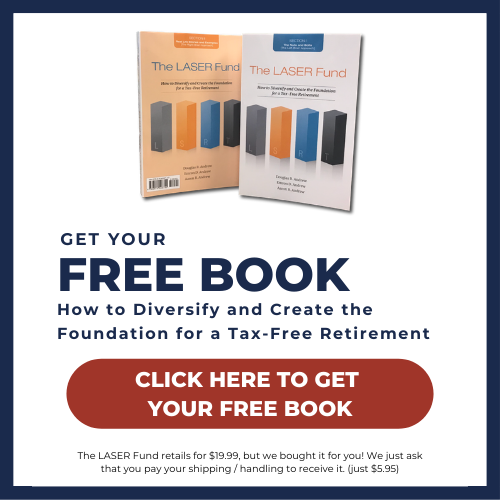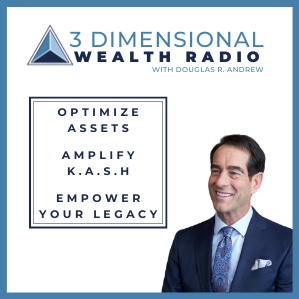If you’re at or near age 60, is it too late to prepare for your retirement? Nope. But don’t wait, and do pay attention to specific things to avoid outliving your money.
In my work as a financial strategist for over 45 years, people have often asked, “How can I invest for retirement if I’m already age 60? I’m on the verge of retiring in maybe five years or 10 years. Isn’t it too late?”
I’m happy to reply “No, no, no, no. You’re still alright. Here’s what you need to do now….” Surprisingly, this isn’t an uncommon question. It’s actually where I’ve spent a lot of my career, helping people who were already 55, 65, 75, even 80 years old optimize their assets and fare better than they had even hoped for in retirement.
Often at this age, folks have been around the block, they’re confident enough to admit they’ve made some mistakes, and they’re ready to explore their options.
Sometimes younger people, who naturally have less money, have been a little less flexible in making prudent decisions. They say, “I don’t want to sell my jet skis. I don’t want to sell my boat. I don’t want to sacrifice that kind of stuff.” But give them another 20 or 30 years, and they realize that it behooves them to be more financially disciplined.
But my older clients, I’ve been able to show many of them how to have an extra $1 million in 10 short years or less. And I’ve shown them how that extra million can generate up to $100,000 a year of tax-free income into perpetuity if it’s in the right kind of financial vehicle.
In my third book, “Last Chance Millionaire,” I share four examples of couples who started with the strategies I teach at age 55, age 60, and even age 65. In 10 short years, I showed them how to have an extra million dollars.
HOME SWEET HOME
Here’s one of those examples, paraphrased: One of the couples had a home that they had raised their six children in, which they bought for about $250,000.
Now the home was worth about $1 million. I said, “Well, there’s one asset that you’re underutilizing. Do you want to stay in that 6,500 square-foot home the rest of your life?” (Some couples do, because that’s where the kids and grandkids come. I understand that because I am still in the home we raised our six children in. But for many couples, they’d rather downsize as they enter their retirement years.)
In this example, the couple considered what they would do with the $1 million they could get for selling their home. Their answer was to take about half and pay cash for a retirement home in Northern Utah for the warm months, and take the other half to pay cash for a home in Southern Utah for the winter months.
I said, “Let me show you a different way. If I were you, I would not pay cash. You can use $200,000 of that million for 20% down payments on the homes, and get mortgages for the rest. Keep your $800,000 from the sale of your current home and put it to work.”
They were hesitant, saying, “We didn’t work our whole life to have a mortgage.” I explained that they could act like their own banker and do what banks do, use Other People’s Money (OPM) to get ahead.
I reminded them that when we put money in a bank, we’re lending our money to the bank. Why would the bank borrow our money? Because they’re going to earn more than they pay us to borrow our money.
I told this couple they could finance those two retirement homes, at $400,000 with an 80% loan-to-value each, at around 4.5% interest–which is tax-deductible as primary and secondary residences.
(Of course anyone doing this needs to make sure the tax laws at the time allow you to deduct that, but assuming that’s the case, if you borrow at 4.5%, and if it’s deductible, it doesn’t cost you 4.5%; it costs you 3%.)
I showed this couple how the $800,000 could instead be put into a properly structured, maximum-premium Indexed Universal Life insurance policy. These policies have historically earned 5% to 10%.
Say their policy is earning 10%, how much more is 10% than 3% (the net cost of the mortgage)? Even if their policy were earning, say 5%, 6%, 7%, 8% or 9%, how much more is that than 3%? Say it earned 9% the first year–that’s 300% more. Their policy would be earning $90,000 that year, and they would have only paid $30,000 in mortgage interest.
In about 10 years, they would see the $800,000 they put inside the insurance policy–money that would have been otherwise lazy, idle equity in their new home–going to work for them. Inside the policy, it could grow tax-free, let’s say from $800,000 up to $2 million in 10 years.
That $2 million could then generate up to $200,000 a year of tax-free cash flow, money they could access via a loan from their policy. Yes, they would have the combined mortgages of $800,000 on the two retirement homes, which are only using about 25% of the income they’re accessing from their insurance policy, which would be about $50,000 net after tax. They are essentially making an extra $150,000. (These are just approximate numbers here, but I’ve helped people do this many, many times.)
KEEP ON ROLLIN’
Now this real estate strategy is just one of the ways folks near retirement can optimize their portfolios for retirement income. As I explain in my article, “Now’s the Time to Convert IRAs and 401(k)s,” another sound strategy is to do a strategic rollout from IRAs and 401(k)s. Here’s why it’s advantageous: $1 million in a traditional IRA or 401(k)–which is invested in the market and vulnerable to economic downturns–can often generate only about $40,000 a year of income BEFORE taxes.
If you’re withdrawing $40,000 from your IRA or 401(k), you’re lucky to net after-tax about $30,000 after taxes if you’re in a 25% tax bracket. And then there’s the 1% asset management fee, so you’re down to about $20,000 a year to live on from your $1 million IRA.
By getting the taxes over and done with now, thousands of people have had success in moving money from their traditional IRAs and 401(k)s (where they’re vulnerable to the downturns in the market) and repositioning the money in properly structured, maximum-premium Indexed Universal Life policies (what I call LASER Funds). With their money in a LASER Fund, they can enjoy tax-free growth, access their money tax-free for retirement income, and pass their money along to their heirs income-tax-free when they die. Their money is also safe from the downturns in the market, protected by a 0% guaranteed floor.
GO FOR BETTER
Another strategy is to look at underperforming assets, such as money socked away in CDs where the bank is paying you a measly 1% or 2% interest. You can increase the safety by six notches and earn on average higher predictable rates of return by moving that money into a LASER Fund.
I have helped many, many 60 year-olds in 10 short years accumulate an extra $1 million or even $2 million that generates up to 10% returns and provides tax-free income for as long as they live.
Now what if you don’t have any existing assets? Sometimes people have been wiped out for some reason, by something totally out of their control. If you’re age 60 and you want to retire at age 70 or maybe 75, you need to seriously look at setting aside 20%, 30%, maybe 50% of your income for retirement.
Make wise decisions to live on less than what you earn and start socking away as much as you can–$20,000, $30,000, $50,000, or $100,000. You can still accumulate up to an extra million dollars in about 10 years if you set aside that kind of money. If you don’t have the ability to do that, consider repositioning any assets you have, as I explained above.
You may also find that you can redefine yourself in retirement and find new sources of income (and purpose). I’ve helped folks who have turned their own passions into opportunities for income, like a client who started teaching people how to fly fish, and another who taught how to rebuild cars. They’ve actually earned as much or more money in retirement, which helped them get to age 70 or 75 before turning to their retirement savings.
The key is as you look forward, it’s time to get serious because you’ve got a short window of time before retirement. But take heart; it’s not too late. Explore your options so you can claim your bright future ahead.
WANT TO LEARN MORE?
Watch the Video – Watch the related YouTube video to see me explain “How to Invest for Retirement at Age 60” (and while you’re there, be sure to subscribe to my YouTube channel so you don’t miss a thing!).
Elevate Your Financial Dimension – Find out how you can improve your Financial Dimension journey and seize the liquidity, safety, predictable rates of return, and tax advantages of a LASER Fund. Explore the in-depth financial strategies and learn from real-life client experiences by claiming your free copy of “The LASER Fund” book at LASERFund.com. Just pay for shipping and handling, and we will send it to you, absolutely free.
Join a Webinar – Want to find out if a LASER Fund (a maximum-funded, properly structured indexed universal life insurance policy) is right for you? Join us for an upcoming webinar where you can explore these strategies.


